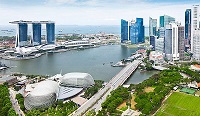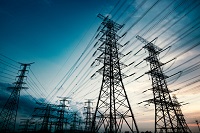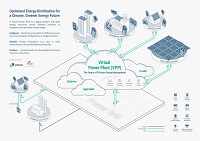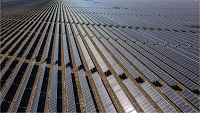Please submit your written feedback via https://go.gov.sg/consult-hedging-ncc-load by 5pm on 31 May 2021. The format for submission of comments is shown in Appendix 1 of the consultation document. Please include a soft-copy of your comments in both PDF and Microsoft Word format in your submission.
- About EMA
- Our Energy Story
- Consumer Information
- Regulations & Licences
- News & Events
- Partnerships
About EMA
Who We Are
Learn about EMA’s leadership, milestones and accomplishments.
Join Us
Explore the career, scholarship and internship opportunities available in EMA.
Our Energy Story
Overview
Discover how the Singapore Energy Story sets the vision towards a net-zero energy future.
Energy Supply
Gain insights into the four switches that power Singapore’s economy and our daily lives.
Energy Demand
Discover ways to enhance energy efficiency and lower your carbon footprint.
Energy Grid
Explore how EMA ensures a reliable and secure energy supply for everyone.
Energy Market Landscape
Learn about the intricacies of Singapore’s energy market structure and operations.
Consumer Information
Electricity
Get tips on buying electricity and protecting your family from electrical hazards.
Gas
Learn about purchasing gas and safeguarding your family against gas hazards.
Solar
Access information on installing solar panels at your home and selling excess electricity to the national grid.
Regulations & Licences
Regulations
Stay up-to-date with the latest regulations, policies and frameworks governing the energy sector.
Licences
Learn about the licences that EMA issues to different stakeholders in the energy sector.
Regulatory Publications
Read about the Codes of Practice and Circulars that EMA publishes to regulate the energy sector.
Partnerships
Calls for Proposal
Collaborate with EMA in co-creating innovative solutions for the energy sector.
Consultations
Give your comments and feedback on EMA’s policies and regulations.
R&D Engagements
Discover how EMA works with stakeholders to catalyse new and innovative digital technologies.
Talent Development
Learn about EMA’s efforts in nurturing talent and cultivate interest in the energy sector.
eSERVICES
Get quick access to EMA’s services for application of worker licences, scholarships and more.
Government officials will NEVER ask you to transfer money or disclose bank log-in details over a phone call. Call the 24/7 ScamShield Helpline at 1799 if unsure. For more information on how to protect yourself against scams, please visit www.scamshield.gov.sg.
Industry Sector:
Update
The consultation has closed for comments.
Consultation
With the introduction of the Open Electricity Market (“OEM”), all household consumers can switch to become a contestable consumer and buy electricity from aretail electricity licensee. Those who remain as non-contestable consumers (“NCCs”) continue to buy electricity from SP Group at the regulated tariff. As of end-Feb 2021, about 51% of consumer accounts remain as NCCs. Most of the NCC accounts (89%) are household consumers while the remaining (11%) are business consumers.
EMA has put in place the liquefied natural gas (“LNG”) vesting contracts to mitigate the risk of the commercial power generation companies (“gencos”) procuring LNG for power generationto support the start-up of the LNG terminal in 2013. The vesting contracts are structured as bilateral hedging contracts (referred to as Contracts-for-Difference or“CfDs”) between each genco and SP Services (“SPS”) which is the Market Support Services Licensee (“MSSL”). They have fixed hedging quantities and a strike price that is administratively set by EMA at the long run marginal cost (“LRMC”) of a combined cycle gas turbine (“CCGT”) generating unit. The CfDs effectively hedge the wholesale purchase of electricity by SPS from the Singapore Wholesale Electricity Market (“SWEM”) for supply to NCCs at the LRMC. This in turn allows EMA to set a relatively stable regulated electricitytariff offered by SPS to NCCs, with the energy cost component being the LRMC to reflect the full cost of producing electricity.
The LNG vesting contracts are set to expire on 30 June 2023. EMA intends to implement a new voluntary scheme for SPS to continue offering a stable regulated tariff to NCCs after the expiry of the LNG vesting contracts. This consultation is to seek comments to the high-level design of the scheme set out in this paper before finalising it for implementation.
Industry Sector:
Tags
Share















